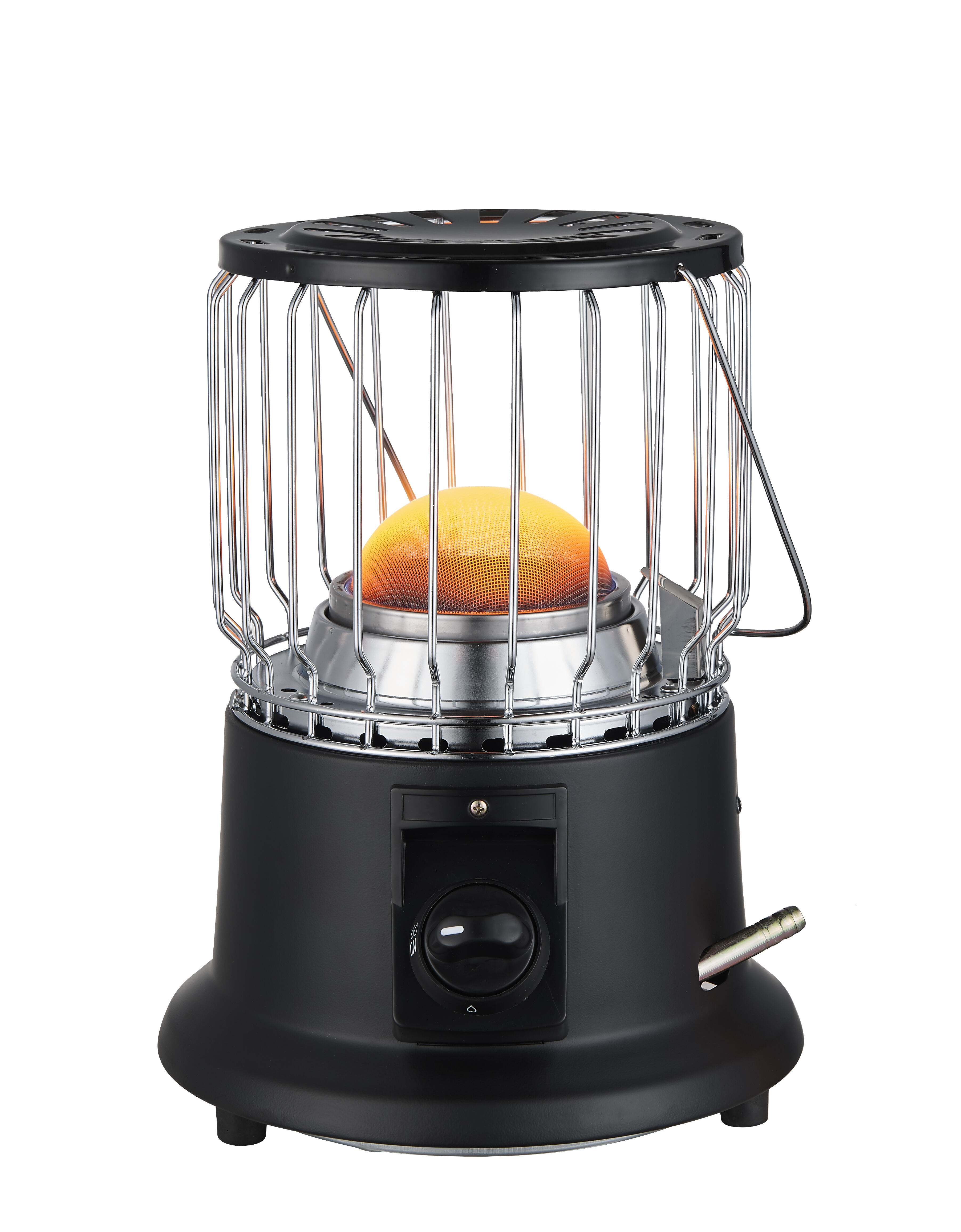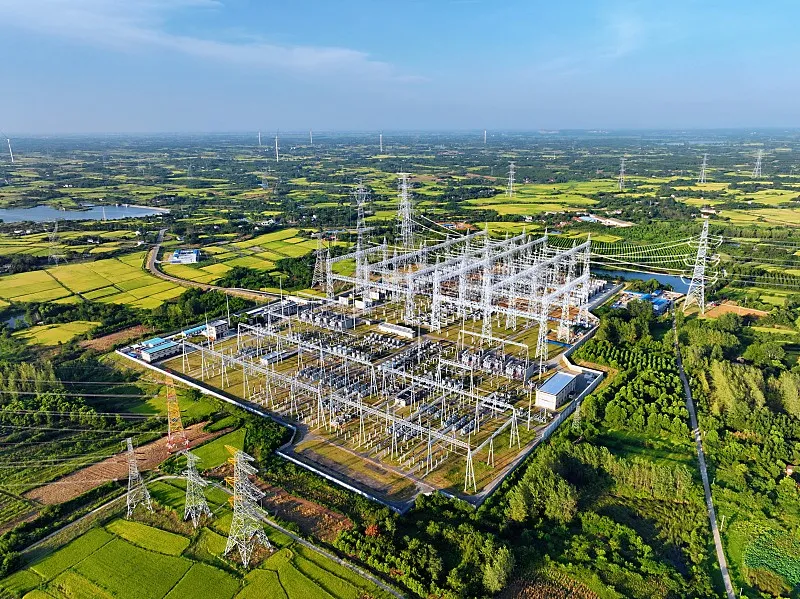Ngrohës i Mençur Infrigjerm: Revolucionon Përdorimin e Energjisë
E Ardhmja e Teknologjisë së Ngrohjes në Shtëpi
Pamjet e ngrohjes në shtëpi po përjetojnë një transformim të shquar me shfaqjen e ngrohës infratermik inteligjent teknologjisë. Këto pajisje inovative po riformulojnë mënyrën sesi ne mendojmë rreth komoditetin brenda ambientit dhe efikasitetin energjetik. Duke përdorur fuqinë e rrezatimit infrigjerm të kombinuar me veçori inteligjente lidhjeje, këto zgjidhje moderne ngrohjeje ofrojnë kontroll të paparë, efikasitet dhe komoditet për pronarët që kërkojnë të optimizojnë hapësirat e tyre të jetesës.
Metodat tradicionale të ngrohjes kanë mbështetur gjatë kohës në konveksion, duke nxehtë ajrin për të ngrohur një dhomë. Megjithatë, stuhet e inteligjentë me infra të kuqe ndjekin një qasje themelore tjetër, duke lëshuar rrezatim infra të kuq që ngroh drejtpërdrejt objektet dhe njerëzit në rrugën e tij, ngjashëm me mënyrën sesi drita e diellit ofron ngrohje. Kjo metodë revolucionare, bashkë me integrimin e teknologjisë inteligjente, krijon një zgjidhje ngrohjeje që është njëkohësisht më efikase dhe më e kujdesshme në përdorimin e energjisë.
Kuptimi i Teknologjisë së Ngrohjes me Infra të Kuq
Shkenca Pas Rrezatimit Infra të Kuq
Në thelb, një stuhë inteligjente me infra të kuq funksionon duke përdorur rrezatim elektromagnetik brenda spektrit infra të kuq. Sipas ngrohësve konvencional që humbasin energji duke nxehtë molekulat e ajrit, teknologjia infra e kuqe transferon direkt nxehtësinë tek objektet e forta në rrugën e saj. Ky proces imiton efektin natyror të ngrohjes nga dielli, duke ofruar komoditet menjëherë pa nevojën të nxehet e gjithë vëllimi i ajrit.
Elementët e ngrohjes brenda këtyre pajisjeve zakonisht janë bërë nga materiale me cilësi të lartë siç është kuarcii ose keramika, të dizajnuar për të emetuar valë infrakuqë në gjatësi vale specifike optimale për rehatinë njerëzore. Kur këto valë bien kontaktoni në sipërfaqe, përfshirë edhe lëkurën njerëzore, ato kthehen në energji nxehtësie, duke krijuar një ndjesi të këndshme ngrohjeje pa ndikuar në cilësinë e ajrit apo nivelet e lagështisë.

Karakteristikat e Integrimit të Mençur
Sistemet moderne inteligjente të ngrohësve infrakuqë përfshijnë teknologji të sofistikuar që shtrihen shumë më tej se mundësitë bazike të ngrohjes. Këto njësi ofrojnë lidhje WiFi, duke i lejuar përdoruesit të kontrollojë dhe mbikëqyrë sistemet e tyre të ngrohjes përmes aplikacioneve në smartphone. Senzorë të avancuar matin vazhdimisht temperaturën e dhomës, praninë e njerëzve dhe kushtet mjedisore për të optimizuar automatikisht performancën e ngrohjes.
Integrimi i algoritmeve të inteligjencës artificiale dhe të mësimit të makinave lejon këtyre pajisjeve të mësojnë nga preferencat dhe modele e përdoruesve, duke rregulluar automatikisht daljen për të ruajtur nivele të përsosura të rehatisë, ndërkohë që minimizon konsumin e energjisë. Kjo funksionalitet i mençur përfaqëson një hap të madh përpara në teknologjinë e ngrohjes, duke ofruar kontroll dhe efikasitet të paparë.
Efikasitet Energjetik dhe Larg dhe Larg të Kostit
Zvogëlimi i konsumit të energjisë
Efikasiteti i ngrohësve inteligjentë infrigjirkanë rrjedh nga qëndrimi i tyre i synuar për ngrohje. Duke ngrohur objektet drejtpërdrejt, anashkalimisht ajrin, këto sisteme mund të arrijnë nivelet e dëshiruara të rehatësisë duke përdorur dukshëm më pak energji sesa metodat tradicionale ngrohjeje. Studimet kanë treguar se ngrohja me infrigjirka mund të reduktojë konsumin e energjisë deri në 30-60% në krahasim me sistemet konvencionale ngrohjeje.
Veçoritë inteligjente përmirësojnë më tej efikasitetin përmes kontrollit të saktë të temperaturës dhe planifikimit. Mundësia për të ngrohur vetëm zonat e caktuara kur është e nevojshme, në kombinim me rregullimin automatik bazuar në detektimin e pranisë, siguron që energia të mos i humbasë duke ngrohur hapësira bosh ose duke ruajtur nivele të panevojshme të temperaturës.
Analiza e Kostos në Afat të Gjatë
Edhe pse investimi fillestar në një ngrohës inteligjent infrigjenë mund të jetë më i lartë sesa opsionet tradicionale ngrohjeje, përfitimet financiare afatgjata janë të konsiderueshme. Konsumi më i ulët energjie përkthehet drejtpërdrejt në fatura më të ulëta shfrytëzimi, me shumë përdorues që raportojnë kursime mujore të konsiderueshme. Gjithashtu, qëndrueshmëria dhe kërkesat minimale për mirëmbajtje të këtyre sistemeve kontribuojnë në efektivitetin e tyre ekonomik në afat të gjatë.
Për më tepër, mundësitë e monitorimit inteligjent ofrojnë të dhëna të hollësishme rreth përdorimit të energjisë, duke lejuar përdoruesit të optimizojnë më tej modele e ngrohjes dhe të identifikojnë mundësi shtesë për kursime. Shumë modelet integrohen gjithashtu me sisteme menaxhimi energjetik në shtëpi inteligjente, duke kontribuar kështu në efikasitetin e përgjithshëm energjetik të shtëpisë.
Larg dhe Larg
Uljë e gjurmës së karbonit
Ngrohësit inteligjent me infra të kuq kontribuojnë në masë të konsiderueshme në përpjekjet për ruajtjen e ambientit përmes konsumit të reduktuar të energjisë dhe funksionimit efikas. Metoda e drejtpërdrejtë e ngrohjes eliminon humbjen e energjisë që shoqëron ngrohjen e vëllimeve të mëdha ajri, duke rezultuar në emissione më të ulëta gazrash serë. Kur furnizohen me burime energjie të rinovueshme, këto sisteme mund të funksionojnë me ndikim minimal mbi ambientin.
Materialet e avancuara dhe teknikat e ndërtimit të përdorura në ngrohësit modernë inteligjent me infra të kuq po ashpërsinë gjithashtu qëndrueshmërinë. Shumë prodhues po implementojnë procese prodhimi miqësore me ambientin dhe po përdorin materiale të ricikluara, duke zvogëluar më tej gjurmët ekologjike të këtyre pajisjeve.
Integrimi i Shtëpisë të Qëndrueshme
Këto sisteme ngrohjeje përputhen në mënyrë të përfektë me tendencën në rritje drejt dizajnimit dhe funksionimit të qëndrueshëm të shtëpisë. Përputhshmëria e tyre me sistemet e shtëpisë inteligjente dhe burimet e energjisë së ripërtëritshme i bën komponente ideale të iniciativave të ndërtimit të gjelbër. Aftësia për të kontrolluar me saktësi zonat dhe oraret e ngrohjes ndihmon pronarët e shtëpive të minimizojnë ndikimin e tyre mbi ambientin, duke ruajtur njëkohësisht nivele optimale rehatie.
Më tej, jetëgjatësia e gjatë operative e ngrohësve inteligjentë me infra të kuq ul shpeshtësinë e zëvendësimit dhe hedhjes, duke kontribuar në reduktimin e mbeturinave dhe konsumit të burimeve me kalimin e kohës. Kjo qëndrueshmëri, bashkë me efikasitetin e tyre energjetik, i bën një zgjedhje të përgjegjshme mjedisore për shtëpitë moderne.
Larg dhe Mbajtje Të Përgjegjshme
Udhëzimet e Instalimit Profesional
Ndërsa ngrohësit inteligjentë me infra të kuqë janë në përgjithësi më pak të ndërlikuar për tu instaluar sesa sistemet tradicionale të ngrohjes, instalimi i duhur është i thelbshëm për performancën optimale. Instalimi profesional garanton vendosjen e saktë për mbulim maksimal dhe efikasitet, si dhe integrimin e duhur me sistemet e automatizimit të shtëpisë. Instaluesit duhet të konsiderojnë faktorë si hapësira e dhomës, lartësia e tavanit dhe kërkesat elektrike për të arritur rezultate optimale.
Vendndodhja dhe këndi i montimit kanë një ndikim të madh në efektivitetin e ngrohësit. Instaluesit profesionalë mund të përcaktojnë pozicionin ideal për të siguruar shpërndarje të barabartë të nxehtësisë, duke ruajtur njëkohësisht distancat e sigurisë nga mobiljet dhe objektet e tjera. Ata gjithashtu sigurojnë lidhje elektrike të sakta dhe integrim në rrjet për veçoritë inteligjente.
Kërkesat për mirëmbajtje
Një nga përparësitë e ngrohësve inteligjentë me infra të kuq është nevoja minimale për mirëmbajtje. Sprej sistemeve me ajër të detyruar, ata nuk kërkojnë ndryshim filtri apo pastrim kanali. Megjithatë, kontrolli dhe pastrimi i rregullt i elementëve ngrohës dhe reflektorëve ndihmon në ruajtjen e performancës optimale. Sistemi inteligjent i monitorimit gjithashtu paralajmëron përdoruesit për çdo problem potencial para se të bëhen probleme serioze.
Përditësimet periodike të softuerit sigurojnë që veçoritë inteligjente të vazhdojnë të funksionojnë në mënyrë efektive dhe të sigurt. Këto përditësime shpesh sjellin veçori të reja dhe përmirësime në sistemin e kontrollit, duke theksuar përvojën e përdoruesit dhe efikasitetin energjetik me kalimin e kohës.
Pyetje të Bëra Shpesh
Si krahasohen ngrohësit inteligjentë me infra të kuq me sistemet tradicionale ngrohjeje në lidhje me sigurinë?
Ngrohësit inteligjentë me infrigjeri përfshijnë shumë veçori sigurie, duke përfshirë mbrojtje automatike të fikjes, sensorë rënies dhe mbrojtje nga temperatura e lartë. Ata nuk përhapin pluhur apo alergjene si sistemet me ajër të detyruar, dhe temperaturat e sipërfaqes mbeten të sigurta për t'u prekur. Mundësitë e monitorimit inteligjent ofrojnë siguri shtesë përmes monitorimit nga distanca dhe zbulimit automatik të gabimeve.
Cili është jetëgjatësia tipike e një ngrohësi inteligjent me infrigjeri?
Me mirëmbajtje të duhur, ngrohësit inteligjentë me infrigjeri mund të zgjasin 10-15 vite ose më shumë. Elementët e ngrohjes janë shumë të qëndrueshëm, dhe mungesa e pjesëve lëvizëse zvogëlon konsumimin. Përbërësit elektronikë janë projektuar për besnikëri afatgjatë, megjithëse mund të nevojiten përditësime të rralla të softuerit për të ruajtur funksionimin inteligjent.
A mund të ngrohin në mënyrë efektive hapësira të mëdha ngrohësit inteligjentë me infrigjeri?
Ngrohësit inteligjentë me infrigjeriç janë shumë të efektshëm në ngrohjen e hapësirave kur janë të përmasave dhe pozicionuar si duhet. Disa njësi mund të koordinohen përmes sistemit të kontrollit inteligjent për të ofruar mbulim të plotë në zona më të mëdha. Metoda e ngrohjes direkte i bën veçanërisht efikas në hapësira me tavan të lartë ku sistemet tradicionale të ngrohjes kanë vështirësi të ruajnë nivele komoditeti.







